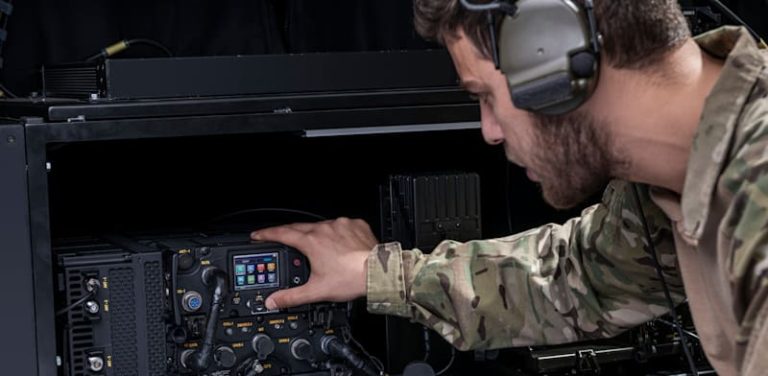
The numbers say that EVs are a small fraction of the automobiles on roads — they account for less than 9% of light-duty automobile gross sales within the third quarter of 2024 — nevertheless, the speed at which EV know-how is growing is astonishing.
The brand new frontier for EVs is named bidirectional charging, the place your automobile’s huge battery might present backup energy to your property throughout an influence outage. Corporations like Ford, GM, Volvo and Tesla have all adopted bidirectional charging on some fashions of their lineups, and lots of extra producers intend to have it out there on all their fashions by 2025 and 2026. With the determine of EVs offered rising shortly — with the Nationwide Renewable Power Laboratory estimating 30 to 42 million EVs within the US by 2030 — what’s new with EVs goes past saving cash on fuel or serving to to cut back carbon emissions.
With the growing adoption of bidirectional charging know-how by EV producers, bidirectional charging might change house battery backup choices just like the Tesla Powerwall. Photo voltaic batteries present backup energy everytime you want it, however they value hundreds of {dollars} to put in and also you solely use them for one factor. Bidirectional charging affords EV house owners two-for-one options, giving them mobility and placing their EVs to work whereas sitting within the storage.
“Bidirectional charging will develop into extra widespread, and 2025 marks an inflection level for bidirectional know-how,” mentioned Thomas Martin, director of gross sales engineering at Swtch, an organization that gives EV charging options for multitenant buildings.
CNET spoke with specialists from automakers and researchers who research the know-how to determine what lies subsequent for the connection between your property and your automobile. Will bidirectional charging actually have the ability to change standalone house backup batteries? What stands in the best way of this know-how going from pretty area of interest, even amongst EVs, to mainstream?
Here is what the way forward for bidirectional charging seems like in 2025.
The 2024 Chevrolet Silverado EV RST can energy a house for weeks with its V2H system.
What does bidirectional charging appear like in 2025?
With main automakers bringing bidirectional charging to their EV lineups, we anticipate to see vital adoption beginning this 12 months, with corporations shifting to not simply assist automobile charging for the house, aka “V2H,” however automobile charging for every part — “V2X.”
“With corporations like GM committing to rolling out V2X tech in all their automobiles by 2026, the variety of automobiles that may take part in V2X will develop in a short time,” mentioned Martin. “It will assist us attain a essential quantity the place the know-how will gas market participation.”
It isn’t simply buyer adoption and technical functionality at play right here. The 2 huge traits we’re prone to see within the coming 12 months contain business fleets and residential power administration.
V2G goes to develop into a a lot greater deal for fleet house owners
The way forward for bidirectional charging goes to look completely different for fleet house owners in contrast with common shoppers. Take the instance of a UPS warehouse that makes use of a bidirectional charging system for its vehicles in a vehicle-to-grid, or “V2G,” setup. In accordance with Omer Onar, analysis and improvement workers at Oak Ridge Nationwide Laboratory, the system utilized by UPS means that you can cost wirelessly whereas offering energy again to the grid.
This microgrid setup can technically work for anybody with a big fleet, together with faculty buses, church buildings, automobile leases, trucking corporations, public transit and extra. These bigger fleets function on a managed and predictable schedule, which is efficacious for V2G packages.
UPS already has a couple of electrical supply vehicles, like this one in London.
A house energy administration system is critical
Alexander Petrofski, head of Volvo Automobiles Power Options, envisions that prospects will want an power arbitrage system for his or her EV, with an algorithm that optimizes the charging and discharging of their automobile in relation to the consumption of their home in addition to electrical energy costs.
To effectively and successfully use bidirectional charging, prospects will want a system that mechanically prices automobiles when prices are low and sells the facility again to the grid when prices are excessive. This arbitrage characteristic already exists in house batteries just like the SolarEdge Dwelling Battery and Tesla Powerwall 3, however automobile producers and firms like EcoFlow, Savant, Jackery and Bluetti are additionally stepping into the sport.
On the automobile aspect, Ford has partnered with Sunrun and BGE in a pilot program to display the capabilities of the F-150 Lightning and the way it can energy the house and feed power again to the grid. GM has additionally launched the GM Power PowerBank, a stationary storage system that lets EV house owners retailer energy and switch power to the grid. It comes with a full house power administration system that may energy a house throughout an outage and offset increased electrical energy charges throughout peak demand.
Digital energy crops additionally require a couple of extra items to suit collectively. You want a automobile and a house inverter that is linked to a digital energy plant program and that system must be maintained by the VPPs and utilities, which is not as easy because it sounds.
On high of that, each house charger must be arrange and linked to the web to take part so the VPP could make an informed guess about what number of automobiles with ample cost are plugged in at a given second. For example, this system cannot pull power out of automobiles which might be in a 5-10% state of cost; these automobiles must cost up first so the house owners nonetheless have use of them.
In accordance with Martin, VPP and grid providers are solely prone to see larger success when there’s extra quantity out there. When extra individuals set up the system and the variety of linked automobiles will increase, attaining predictability turns into simpler.
New developments at CES 2025
Good power administration programs have been enormous at CES 2025. EcoFlow introduced Oasis, an AI-powered house power administration system that works with current EcoFlow merchandise and entire house backup energy options. It makes use of a mix of AI, predictive analytics and automation to handle house energy wants and work with a house photo voltaic system. It will probably do issues like regulate power use for time-of-use pricing and account for future power wants, photo voltaic era, electrical energy charges and climate patterns.
They weren’t alone on this, with Savant showcasing its new Good Finances electrical panel, which consists of energy modules that may be added to an current electrical panel. The included software program helps regulate house power utilization, making certain demand by no means exceeds capability. It’s going to prioritize how energy is used, monitor stay consumption, shed essential hundreds and steadiness utilization throughout the service line restrict.
Savant’s Good Finances system can handle your energy use to stave off a utility improve.
Bluetti has additionally revealed good power administration programs and merchandise. With Bluetti, there’s the EnergyPro 6K, designed for small to medium-sized houses as a house backup possibility. Along with integrating into current rooftop photo voltaic programs and paired with the AT1 Good Distribution Field, it helps bidirectional EV charging and generator charging.
Lastly, Jackery’s HomePower EnergySystem is predicted to launch later this 12 months. It is a modular power system that may be scaled up with stacks from 7.7 kilowatt-hours to fifteen.4kWh. Consisting of battery items, a hybrid inverter and a hub to handle hundreds, it integrates simply into EV chargers, backup mills and current house photo voltaic programs.
Can bidirectional charging change your property battery?
“I by no means had a house battery,” mentioned Ryan O’Gorman, power providers and V2G enterprise lead at Ford. “I’ve simply had the F150 [Lightning]. We had a really extreme storm right here in Michigan over the summer season that got here by way of my space and worn out bushes and energy traces. [My area] was out of energy for 3 days — however I wasn’t. I ran off my truck the entire time and when the facility got here again, I had near 100 miles left.”
The common EV proprietor is not prone to discover the drain from utilizing their automobile as a battery backup. “The great a part of a automobile is when it is plugged in, taking that 15-30 miles from the automobile is sort of not noticed by the patron,” mentioned O’Gorman, “and you may cost it again with lower than an hour, relying on the automobile.”
Not all of the specialists we spoke with agreed that bidirectional charging will wholly change house batteries. “In the event you stay someplace distant and want one thing higher suited to longer-term power backup, it is in all probability extra economical to get a house battery system,” mentioned Martin. “That may in all probability retailer extra power and never trigger issues in case you nonetheless must get round throughout a days-long energy outage.”
“We do not actually see an either-or,” mentioned Ben Clarin, senior undertaking supervisor on the Electrical Energy Analysis Institute, a analysis group that gives impartial and goal trade experience. “Each of them can present the capabilities of supporting individuals by way of energy outages.” Clarin believes there’s room for bidirectional charging to coexist with house battery programs and it is unlikely to see programs just like the Tesla Powerwall wholly changed by bidirectional charging.
Clarin mentioned bidirectional charging can work in residential use circumstances the place a house battery is not sensible, corresponding to in a multifamily constructing the place tenants cannot have their very own battery backup because of house and expense.
Ford’s F-150 Lightning Professional, the least costly electrical pickup, targets business purposes moderately than non-public house owners.
The present state of bidirectional charging
Because the title suggests, bidirectional charging is a course of that lets your automobile convert its saved direct present power into alternating present electrical energy, feeding energy again into your property or the grid. This flips the script from the standard, one-way charging course of for EVs, which usually takes AC energy from a wall socket to an EV charger and automobile battery that converts it into DC power.
The technical implementation is pretty easy, however the actual potential in bidirectional charging lies in all of the completely different doable use circumstances. For example, one implementation is V2H charging, the place your automobile can function a backup generator throughout an influence outage.
“I believe there are two primary use circumstances,” mentioned Aseem Kapur, chief income officer at GM Power, a division of GM that gives options for power storage, EV charging and extra. “One is a pure resiliency software the place you employ your automobile and borrow [power] in your house within the occasion of outages. That makes for a really priceless software in a situation the place now you can use your automobile as a twin asset proper past mobility. [It can] function an power asset, combining it with stationary storage.”
The Nissan Leaf was a pioneer in bidirectional charging performance.
When totally charged, the typical EV holds 60 kilowatt-hours of electrical energy, which might energy a house for about two days, however relying on utilization, it could usually final even longer, which makes it fairly sensible to make use of your EV as a house energy backup.
“If I have a look at your normal, off-the-shelf stationary storage [it has] someplace between 7 and 13 kilowatt-hours of energy,” O’Gorman mentioned. “That is implausible, however that is actually [only] someplace between 15 and 30 miles on the automobile — these automobiles can get 300 miles.” Primarily, meaning the typical individual utilizing their EV as an emergency energy possibility is unlikely to actually discover any vital drain on their automobile’s mileage, making it sensible to make use of as an influence backup throughout emergencies.
There are additionally choices like automobile to load, or “V2L,” which lets you use an adapter to let your automobile energy issues like tenting gear, energy instruments, house home equipment and different units. “For primary vehicle-to-load, there’s mainly no barrier to entry,” Martin mentioned. “In case your automobile has an outlet so that you can plug an extension wire into, you are all set to plug your units in.”
That makes V2L the primary bidirectional charging use case the typical buyer is prone to expertise. There’s additionally vehicle-to-vehicle, or “V2V,” which might present energy to an EV that is run out, much like how you should use your automobile battery to jumpstart one other automobile, though a extra apt analogy could be siphoning fuel out of your tank to place it into one other automobile.
Challenges of widespread bidirectional charging adoption
The swap to bidirectional charging just isn’t so simple as a software program replace or a brand new piece of kit. It should require producers and shoppers to cope with a bunch of hurdles.
Car functionality and charger functionality
“[T]he largest barrier to bidirectional charging and different vehicle-to-everything applied sciences and purposes is automobile functionality,” Swtch’s Martin mentioned. “Whereas there are chargers within the area that assist V2X, the restricted variety of appropriate automobiles makes the charger tech a bit much less impactful as we speak.”
That is set to alter within the coming years. Simply at GM, Kapur listed the brand new Chevrolet EVs that launched, together with the Equinox, Blazer and Silverado, plus the Cadillac Lyriq and GMC Sierra. All of those automobiles are bidirectionally enabled and work with GM’s automobile house system.
The 2023 Ford F150 Lightning comes with a free bidirectional charger once you get the extended-range battery possibility.
Probably the most outstanding present instance is the Ford F150 Lighting with its Ford Related Cost Station Professional, a $1,310 bidirectional charger that comes free with some fashions of the electrical truck.
We anticipate different automobile producers to comply with swimsuit and allow their automobiles to make use of bidirectional charging. Volvo has confirmed that the Volvo EX90 can be able to bidirectional charging and is engaged on an AC bidirectional charger in Europe. The Swedish automaker additionally has a partnership with dcbel, a house power firm, to deliver a bidirectional DC house power station to the US market.
Price of set up and improve
Bidirectional charging is costlier than primary EV charging. “If you wish to do extra, like join your automobile to your property as a battery backup or hook up with the grid for V2G packages, the principle impediment is expense,” mentioned Martin. “You must buy each a appropriate charger and disconnect swap, and that is going to value hundreds of {dollars} — and you will want to search out house for it.”
The house and value could make bidirectional charging in a multifamily constructing prohibitive, however even single-family householders could discover sudden prices. Some houses have older wiring and older electrical panels that do not assist 200-amp electrical service. To take full benefit of bidirectional charging, some householders could require a panel improve to get to the cost stage they need, which will be one other expense.
O’Gorman factors out that sure bidirectional chargers, like Ford’s Cost Station Professional, can downrate their charging to regardless of the set up load helps, so in that regard, it isn’t strictly essential to improve your panel so long as you may stay with not getting the total 19kWh of charging the charger is able to.
Regulatory setting
A significant factor of bidirectional charging is dependent upon the regulatory setting. The method of shopping for and promoting electrical energy again to the grid is normally left as much as particular person states and utility corporations. Some states might need web metering, permitting you to be compensated for extra power produced by your photo voltaic panels.
“[I]t’s sometimes known as an interconnection settlement within the trade,” mentioned Andrew Meitz, chief engineer for electrical automobile charging and grid integration on the Nationwide Renewable Power Laboratory. “Any system that you simply add to your home that is capable of export energy again to the grid must be listed, after which it must be declared to the utility that you’ve a producing system.”
Power arbitrage and capability arbitrage — that’s, the fee you get for power saved and returned to the grid by your property battery or EV — may also differ considerably between states. Internationally, the European Union has known as for modified laws due to grid charges and taxes on shopping for and promoting electrical energy that make it troublesome for personal prospects to become involved.
Your private home battery’s energy output determines the variety of hundreds you can backup.
These are challenges which might be similar to people who exist for digital energy crops. “The regulatory panorama for digital energy crops throughout the US is organized throughout not simply all 50 states, however even particular person utility territories inside every state,” mentioned Mark Dyson, RMI‘s managing director of electrical energy, “and that is one of many important challenges that we see is going through or impeding development of the market general.”
The important thing downside is that prospects want a purpose to need to put power again into the grid, Dyson mentioned. “These advantages are unavailable or unattractive until utilities and regulators make them out there to prospects by way of price design, by way of incentive packages, by way of adjustments in the best way the utilities plan and function their grids, to actually make the most of this useful resource on the utility scale.”
Does bidirectional charging affect automobile battery life and put on?
The common EV consumer doubtless will not have to fret an excessive amount of about put on and tear on the automobile battery from bidirectional charging.
“Our information exhibits that this shouldn’t be a difficulty for the common shopper,” mentioned Petrofski. “So long as bidirectional charging is carried out in a dimensioned and restricted approach, it is not going to have a big affect on battery life.” In accordance with Petrofski, Volvo will restrict the bidirectional performance for patrons utilizing an excessive amount of of their automobile’s battery. That is based mostly on customer-specific circumstances, driving and charging habits.
“The factor that degrades batteries quickest is stressing the battery outdoors of best circumstances,” mentioned Martin. “In the event you usually cost shortly to a excessive state of cost and accomplish that in actually sizzling or chilly climate, that is the likeliest factor to begin producing noticeable degradation.”
With that mentioned, on a technical stage, the EV should not endure from issues in case you use it as a house battery backup, based on Martin. “Immediately’s EV battery chemistry is greater than able to dealing with the extra calls for of sending energy again to the grid or powering a house for a couple of days, even a number of instances a 12 months. Most automobile house owners should not have any issues in any respect.”
The opposite excellent news is that each producer we spoke with confirmed that bidirectional charging is a supported use of their EVs. It will not void or modify the guarantee, which is a priority usually raised by prospects.





